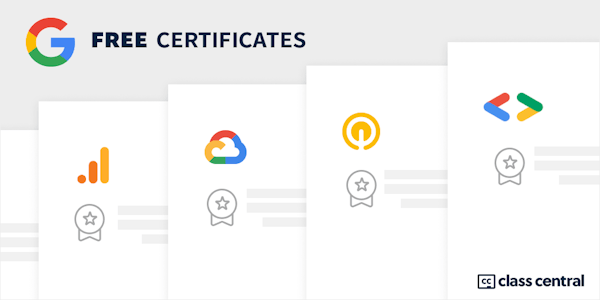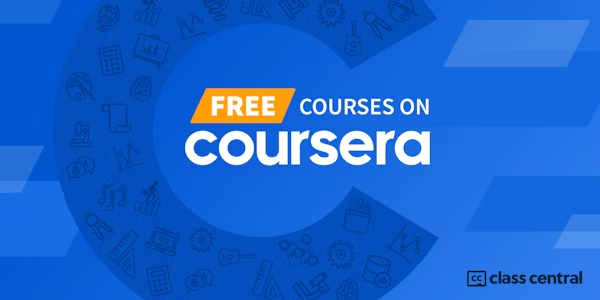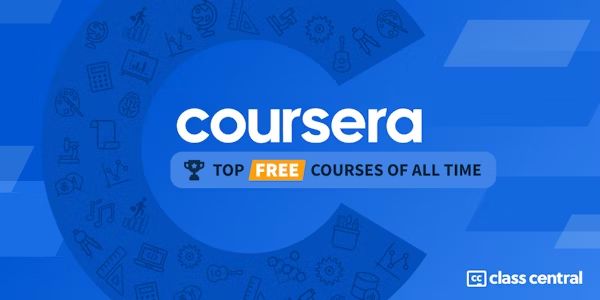Overview
Prepare for a career in the high-growth field of UX design, no experience or degree required. With professional training designed by Google, get on the fast-track to a competitively paid job. There are over 138,000 open jobs in UX design with a median entry-level salary of $112,000.¹
User experience (UX) designers focus on the interaction that users have with products, like websites, apps, and physical objects. They make those everyday interactions useful, enjoyable, and accessible.
Over 7 courses, gain in-demand skills that will prepare you for an entry-level job.
You will create designs on paper and in digital design tools like Figma. By the end of the certificate program, you will have a professional UX portfolio that includes three end-to-end projects, so that you’re ready to apply for jobs. Upon completion, you can directly apply for jobs with Google and over 150 U.S. employers, including Deloitte, Target, Verizon, and of course, Google.
75% of certificate graduates report a positive career outcome (e.g., new job, promotion, or raise) within six months of completion²
¹Lightcast™ US Job Postings (2022: Jan. 1, 2022 - Dec. 31, 2022).
²Based on program graduate survey, United States 2022
Syllabus
Course 1: Foundations of User Experience (UX) Design
- Offered by Google. Foundations of User Experience (UX) Design is the first of a series of seven courses that will equip you with the skills ... Enroll for free.
Course 2: Start the UX Design Process: Empathize, Define, and Ideate
- Offered by Google. Start the UX Design Process: Empathize, Define, Ideate is the second course in a certificate program that will equip you ... Enroll for free.
Course 3: Build Wireframes and Low-Fidelity Prototypes
- Offered by Google. Build Wireframes and Low-Fidelity Prototypes is the third course in a certificate program that will equip you with the ... Enroll for free.
Course 4: Conduct UX Research and Test Early Concepts
- Offered by Google. Conduct UX Research and Test Early Concepts is the fourth course in a certificate program that will equip you with the ... Enroll for free.
Course 5: Create High-Fidelity Designs and Prototypes in Figma
- Offered by Google. Create High-Fidelity Designs and Prototypes in Figma is the fifth course in a certificate program that will equip you ... Enroll for free.
Course 6: Build Dynamic User Interfaces (UI) for Websites
- Offered by Google. Build Dynamic User Interfaces (UI) for Websites is the sixth course in a program that will equip you with the skills you ... Enroll for free.
Course 7: Design a User Experience for Social Good & Prepare for Jobs
- Offered by Google. Design a User Experience for Social Good and Prepare for Jobs is the seventh and final course in a program that will ... Enroll for free.
- Offered by Google. Foundations of User Experience (UX) Design is the first of a series of seven courses that will equip you with the skills ... Enroll for free.
Course 2: Start the UX Design Process: Empathize, Define, and Ideate
- Offered by Google. Start the UX Design Process: Empathize, Define, Ideate is the second course in a certificate program that will equip you ... Enroll for free.
Course 3: Build Wireframes and Low-Fidelity Prototypes
- Offered by Google. Build Wireframes and Low-Fidelity Prototypes is the third course in a certificate program that will equip you with the ... Enroll for free.
Course 4: Conduct UX Research and Test Early Concepts
- Offered by Google. Conduct UX Research and Test Early Concepts is the fourth course in a certificate program that will equip you with the ... Enroll for free.
Course 5: Create High-Fidelity Designs and Prototypes in Figma
- Offered by Google. Create High-Fidelity Designs and Prototypes in Figma is the fifth course in a certificate program that will equip you ... Enroll for free.
Course 6: Build Dynamic User Interfaces (UI) for Websites
- Offered by Google. Build Dynamic User Interfaces (UI) for Websites is the sixth course in a program that will equip you with the skills you ... Enroll for free.
Course 7: Design a User Experience for Social Good & Prepare for Jobs
- Offered by Google. Design a User Experience for Social Good and Prepare for Jobs is the seventh and final course in a program that will ... Enroll for free.
Courses
-
Design a User Experience for Social Good and Prepare for Jobs is the seventh and final course in a program that will equip you with the skills you need to become an entry-level UX designer. In this course, you will design a dedicated mobile app and a responsive website focused on social good. You will showcase all that you’ve learned during the certificate program to complete the design process from beginning to end: empathizing with users, defining their pain points, coming up with ideas for design solutions, creating wireframes and prototypes, and testing designs to get feedback. By the end of this course, you will have a new cross-platform design project to include in your professional UX portfolio. This course will also prepare you to land your first job as a UX designer. You’ll learn how to interview for entry-level UX design positions. You’ll get tips from Googlers based on their own interview experiences and their unique perspectives as hiring managers. And, you’ll polish the professional UX portfolio you’ve been building throughout the program so that it’s ready for job applications. Current UX designers and researchers at Google will serve as your instructors, and you will complete hands-on activities that simulate real-world UX design scenarios. Learners who complete the seven courses in this certificate program should be equipped to apply for entry-level jobs as UX designers. By the end of this course, you will be able to: - Apply each step of the UX design process (empathize, define, ideate, prototype, test) to create designs focused on social good. - Identify the differences between dedicated mobile apps and responsive web apps. - Understand progressive enhancement and graceful degradation approaches for designing across devices. - Build wireframes, mockups, and low-fidelity and high-fidelity prototypes. - Add a new design project to your professional UX portfolio. - Create your portfolio of design work for job applications. - Join and participate in online UX communities. - Interview for an entry-level UX design job. - Determine if freelance design work is a good career fit for you. This course is suitable for beginner-level UX designers who have completed the previous six courses of the Google UX Design Certificate.
-
Foundations of User Experience (UX) Design is the first of a series of seven courses that will equip you with the skills needed to apply to entry-level jobs in user experience design. UX designers focus on the interactions that people have with products like websites, mobile apps, and physical objects. UX designers make those everyday interactions usable, enjoyable, and accessible. The role of an entry-level UX designer might include empathizing with users, defining their pain points, coming up with ideas for design solutions, creating wireframes, prototypes, and mockups, and testing designs to get feedback. Current UX designers and researchers at Google will serve as your instructors, and you will complete hands-on activities that simulate real-world UX design scenarios. Learners who complete the seven courses in this certificate program should be equipped to apply for entry-level jobs as UX designers. No previous experience is necessary. By the end of this course, you will be able to: - Define the field of UX and explain why it’s important for consumers and businesses. - Understand foundational concepts in UX design, such as user-centered design, the design thinking framework, accessibility, and equity-focused design. - Identify the factors that contribute to great user experience design. - Review common job responsibilities of entry-level UX designers and teams that they work with. - Explore job opportunities and career paths within the field of user experience. - Explain why design sprints are an important and useful part of a UX designer’s work. - Describe common UX research methods. - Identify and account for biases in UX research.
-
Build Dynamic User Interfaces (UI) for Websites is the sixth course in a program that will equip you with the skills you need to apply to entry-level jobs in user experience (UX) design. In this course, you will plan a design for a website, create wireframes and prototypes, and test your designs to get feedback. Additionally, you will learn about engaging in design critique sessions and how to give and receive feedback. By the end of this course, you will have a new design project to include in your professional UX portfolio. In addition, you’ll learn how to search for entry-level UX design jobs, create a resume that highlights your skills and accomplishments, and build your professional portfolio website. Current UX designers and researchers at Google will serve as your instructors, and you will complete hands-on activities that simulate real-world UX design scenarios. Learners who complete the seven courses in this certificate program should be equipped to apply for entry-level jobs as UX designers. By the end of this course, you will be able to: - Apply each step of the UX design thinking framework (empathize, define, ideate, prototype, test) to create a responsive website. - Plan information architecture and create sitemaps for website designs. - Apply common layouts for web pages. - Plan and conduct a usability study to gather feedback about designs. - Iterate on designs based on research insights. - Work with design systems. - Add a new design project to your professional UX portfolio. - [Optional] Create or update a UX-focused resume. - [Optional] Learn how to search for and apply to introductory-level jobs in the field of UX. This course is suitable for beginner-level UX designers who have completed the previous five courses of the Google UX Design Certificate. Alternatively, learners need to have a strong foundational understanding of the design process; experience creating wireframes, mockups, and prototypes; and the ability to conduct usability studies. No previous experience with Figma is required.
-
Create High-Fidelity Designs and Prototypes in Figma is the fifth course in a certificate program that will equip you with the skills you need to apply to entry-level jobs in user experience (UX) design. In this course, you will follow step-by-step tutorials to learn how to create high-fidelity designs, called mockups, in Figma, a popular design tool. Then, you’ll turn those designs into an interactive prototype that works like a finished product. You’ll conduct research to collect feedback about your designs and make improvements. Finally, you’ll learn how to share your designs with development teams and highlight your work in your professional UX portfolio. Current UX designers and researchers at Google will serve as your instructors, and you will complete hands-on activities that simulate real-world UX design scenarios. Learners who complete the seven courses in this certificate program should be equipped to apply for entry-level jobs as UX designers. By the end of this course, you will be able to: - Build mockups and high-fidelity prototypes in Figma. - Define and apply common visual design elements and principles. - Demonstrate how design systems can be used to organize, standardize, and enhance designs. - Understand the role of design critique sessions and feedback while iterating on designs. - Learn how to hand off finished design projects to engineering teams. - Complete mobile app designs to include in a professional UX portfolio. This course is suitable for beginner-level UX designers who have completed the previous four courses of the Google UX Design Certificate. Alternatively, learners who have not completed the previous courses should have a strong understanding of the design process, how to create low-fidelity designs on paper and in Figma, and how to conduct usability studies.
-
Conduct UX Research and Test Early Concepts is the fourth course in a certificate program that will equip you with the skills you need to apply to entry-level jobs in user experience (UX) design. In this course, you will learn how to plan and conduct a usability study to gather feedback about designs. Then, you will modify your low-fidelity designs based on insights from your research. Current UX designers and researchers at Google will serve as your instructors, and you will complete hands-on activities that simulate real-world UX design scenarios. Learners who complete the seven courses in this certificate program should be equipped to apply for entry-level jobs as UX designers. By the end of this course, you will be able to: - Plan a UX research study, including the project background, research goals, research questions, Key Performance Indicators, methodology, participants, and script. - Explain the importance of respecting privacy and user data. - Conduct a moderated and unmoderated usability study. - Take notes during a usability study. - Create affinity diagrams to group and analyze data. - Synthesize observations from research and come up with insights. - Develop persuasive presentation skills to share research insights. - Modify low-fidelity designs based on research insights. - Continue to design a mobile app to include in your professional portfolio. To be successful in this course, you should complete the previous three courses in the certificate program. Or, you need to have an ability to conduct user research to inform the creation of empathy maps, personas, user stories, user journey maps, problem statements, and value propositions; as well as an ability to create wireframes and low-fidelity prototypes on paper and in Figma.
-
Build Wireframes and Low-Fidelity Prototypes is the third course in a certificate program that will equip you with the skills you need to apply to entry-level jobs in user experience (UX) design. In this course, you’ll continue to design a mobile app for your professional UX portfolio. You’ll start by creating storyboards and getting familiar with the basics of drawing. Then, you'll create paper wireframes and digital wireframes using the design tool Figma. You’ll also create a paper prototype and a digital low-fidelity prototype in Figma. Current UX designers and researchers at Google will serve as your instructors, and you will complete hands-on activities that simulate real-world UX design scenarios. Learners who complete the seven courses in this certificate program should be equipped to apply for entry-level jobs as UX designers. By the end of this course, you will be able to: - Develop a goal statement. - Create two types of storyboards: big picture and close-up. - Understand the difference between low-fidelity and high-fidelity design. - Apply the basics of drawing. - Apply the principles of information architecture to organize a mobile app. - Create paper wireframes for a mobile app design. - Develop digital wireframes in the design tool Figma. - Build a paper prototype to add interactivity to designs. - Design a low-fidelity prototype in Figma. - Recognize implicit bias and deceptive patterns in design. - Continue to design a mobile app to include in your professional portfolio. To be successful in this course, you should complete the previous two courses in this certificate program, or have an ability to conduct user research to inform the creation of empathy maps, personas, user stories, user journey maps, problem statements, and value propositions. You will also need paper and a pen or pencil.
-
Start the UX Design Process: Empathize, Define, Ideate is the second course in a certificate program that will equip you with the skills needed to apply to entry-level jobs in user experience (UX) design. In this course, you’ll complete the first phases of the design process for a project that you’ll be able to include in your portfolio. You will learn how to empathize with users and understand their pain points, define user needs using problem statements, and come up with lots of ideas for solutions to those user problems. Current UX designers and researchers at Google will serve as your instructors, and you will complete hands-on activities that simulate real-world UX design scenarios. Learners who complete the seven courses in this certificate program should be equipped to apply for entry-level jobs as UX designers. No previous experience is necessary. By the end of this course, you will be able to: - Empathize with users to understand their needs and pain points. - Create empathy maps, personas, user stories, and user journey maps to understand user needs. - Develop problem statements to define user needs. - Generate ideas for possible solutions to user problems. - Conduct competitive audits. - Start designing a mobile app, a new project to include in your professional UX portfolio.
Taught by
Google Career Certificates






